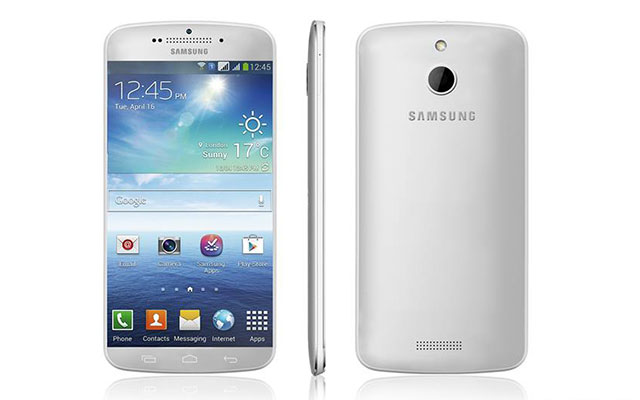 Korea’s Samsung Electronics this week began selling its latest flagship handset, the highly anticipated Galaxy S5. Early reviews are already in and, although largely positive, some reviewers are asking if the insane pace of innovation in the smartphone industry in recent years is petering out.
Korea’s Samsung Electronics this week began selling its latest flagship handset, the highly anticipated Galaxy S5. Early reviews are already in and, although largely positive, some reviewers are asking if the insane pace of innovation in the smartphone industry in recent years is petering out.
The Wall Street Journal’s Geoffrey Fowler, in his review of the S5, muses that Samsung’s update to its top-selling Galaxy S4 “barely moves the needle”. Apart from the fact that it’s waterproofed, the S5’s “most original new feature is a heart-rate sensor that works well only if you hold very, very still”.
“It also has a fingerprint reader more versatile that the one in Apple’s iPhone 5s, but a camera that still doesn’t take great pictures in low light. Anybody weighing this phone as an upgrade or a switch from another model may rightly wonder: has the smartphone evolution stalled?”
It’s an intriguing question.
Already, critics have accused Apple of falling behind the innovation curve with its iPhone, sticking stubbornly to a small screen size (relative to Android-powered phones made by rivals). They say Apple has been adding new features at a snail’s pace in recent years. They argue that the company is not innovating nearly as quickly as it did when the late Steve Jobs was at the helm.
The criticism has clearly stung – last year, senior vice-president for worldwide marketing Phil Schiller used a stage at Apple’s developer conference, where he was unveiling an impressive new Mac Pro computer, to hit back. “Can’t innovate anymore, my ass,” he said. (Watch the video here.)
Schiller might hiss at his critics, but reports suggest that with the iPhone 6, expected later this year, Apple is going to mimic (gasp!) its rivals by increasing screen size to keep pace with the slew of Android-based rivals from Asian manufacturers such as Samsung, Sony, HTC and LG Electronics. Most reports are pointing to two new high-end iPhone 6 models: one with a 4,7-inch screen (a big step up from the current model) and a “phablet” device with a screen size somewhere between 5,5 and 5,7 inches.
But screen size doesn’t really amount to innovation.
Is there a new feature you’ve seen in the past year that has really wowed you into wanting a new phone? The fingerprint reader on the 5s? Perhaps. But there’s not much else that comes to mind.
That doesn’t mean innovation isn’t happening, though. It’s just shifted focus.
The smartphone appears to have evolved into what is likely its most natural form: a large, touchscreen device with ever-speedier and improving components. But the innovation in the adjacent field of wearable computing may just getting started. Consumer electronics companies are investing big research and development dollars trying to come up with breakthrough wearable products like smart watches and even smart glasses.
Their successes have been limited at best — so far.
But wearable computing, coupled with the power of next-generation mobile broadband connections, speech recognition technology and cloud services, promises to kick off a new wave of innovation.
Speech recognition technologies are advancing at an incredible pace. If you haven’t used your phone to search Google using your voice recently, put this newspaper down for a minute and give it a go – it’s remarkable how accurate it is, even in noisy environments. We are now entering the era of mainstream voice-driven computing.

We are already able to communicate with someone in another language (albeit fairly roughly at the moment) in near real time, using our phones to translate our respective voices. Within a few short years, the technology will have advanced to the point where it will be possible to converse clearly and fluidly with someone without knowing a word of their language or them of yours.
So, innovation hasn’t slowed, it’s simply shifted. Consumers don’t really care or even know if their phone has a four-way or an eight-way processor or 2GB or 3GB of main memory. But they do care about the services they get on their phones. And that’s where the real war is now unfolding, where innovation in online mapping, voice-driven search, mobile money services and content streaming, to name but a few, are driving the next wave of innovation, a wave that will be underpinned by a new breed of wearable computers.
- Duncan McLeod is editor of TechCentral. Find him on Twitter
- This column was first published in the Sunday Times




